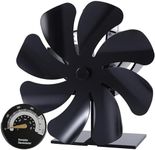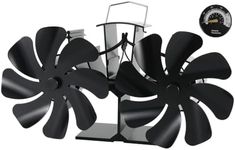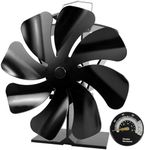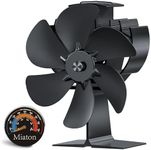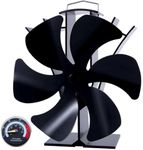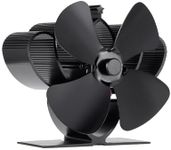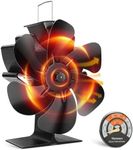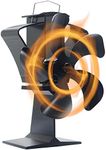Buying Guide for the Best Wood Stove Fan
Choosing the right wood stove fan can significantly enhance the efficiency of your wood stove by distributing heat more evenly throughout your space. A wood stove fan operates without electricity, using the heat from the stove to power its blades. This makes it an eco-friendly and cost-effective solution for improving your heating system. To find the best wood stove fan for your needs, consider the following key specifications and their importance.Operating Temperature RangeThe operating temperature range indicates the range of temperatures at which the fan can function effectively. This is important because it ensures the fan will work properly with your stove's typical operating temperatures. Fans with a lower starting temperature are ideal for stoves that don't get extremely hot, while those with a higher maximum temperature are better suited for very hot stoves. Choose a fan with an operating range that matches your stove's heat output to ensure optimal performance.
Airflow (CFM)Airflow, measured in cubic feet per minute (CFM), indicates how much air the fan can move. This is crucial for determining how effectively the fan can distribute heat throughout your room. Fans with lower CFM (around 100-150) are suitable for smaller spaces or less intense heating needs, while higher CFM (200 and above) is better for larger areas or more significant heat distribution. Consider the size of the area you want to heat and choose a fan with an appropriate CFM rating to ensure even heat distribution.
Number of BladesThe number of blades on a wood stove fan can affect its efficiency and noise level. Fans with more blades tend to move air more efficiently and quietly. Typically, fans have between 2 to 5 blades. If you prefer a quieter operation and more efficient air movement, opt for a fan with more blades. However, if noise is not a concern, a fan with fewer blades can still be effective.
Material and Build QualityThe material and build quality of the fan determine its durability and heat resistance. Fans made from high-quality metals like aluminum or steel are more durable and can withstand higher temperatures. This is important for ensuring the fan's longevity and consistent performance. Choose a fan made from robust materials to ensure it can handle the heat from your stove and last for many years.
Size and DesignThe size and design of the fan can impact its compatibility with your stove and the aesthetics of your space. A larger fan may move more air but could be too bulky for smaller stoves, while a smaller fan is more compact but may not be as powerful. Additionally, the design should complement your stove and room decor. Consider the size of your stove and the overall look you want to achieve when selecting a fan.

